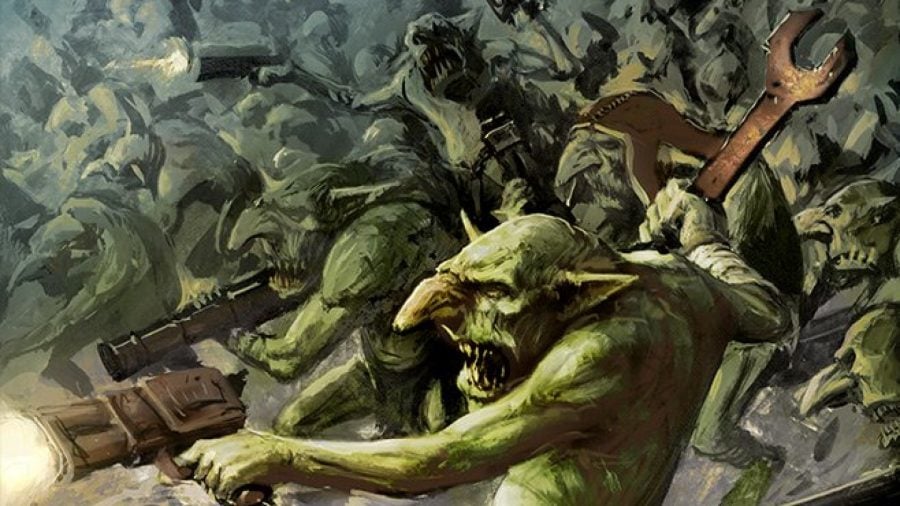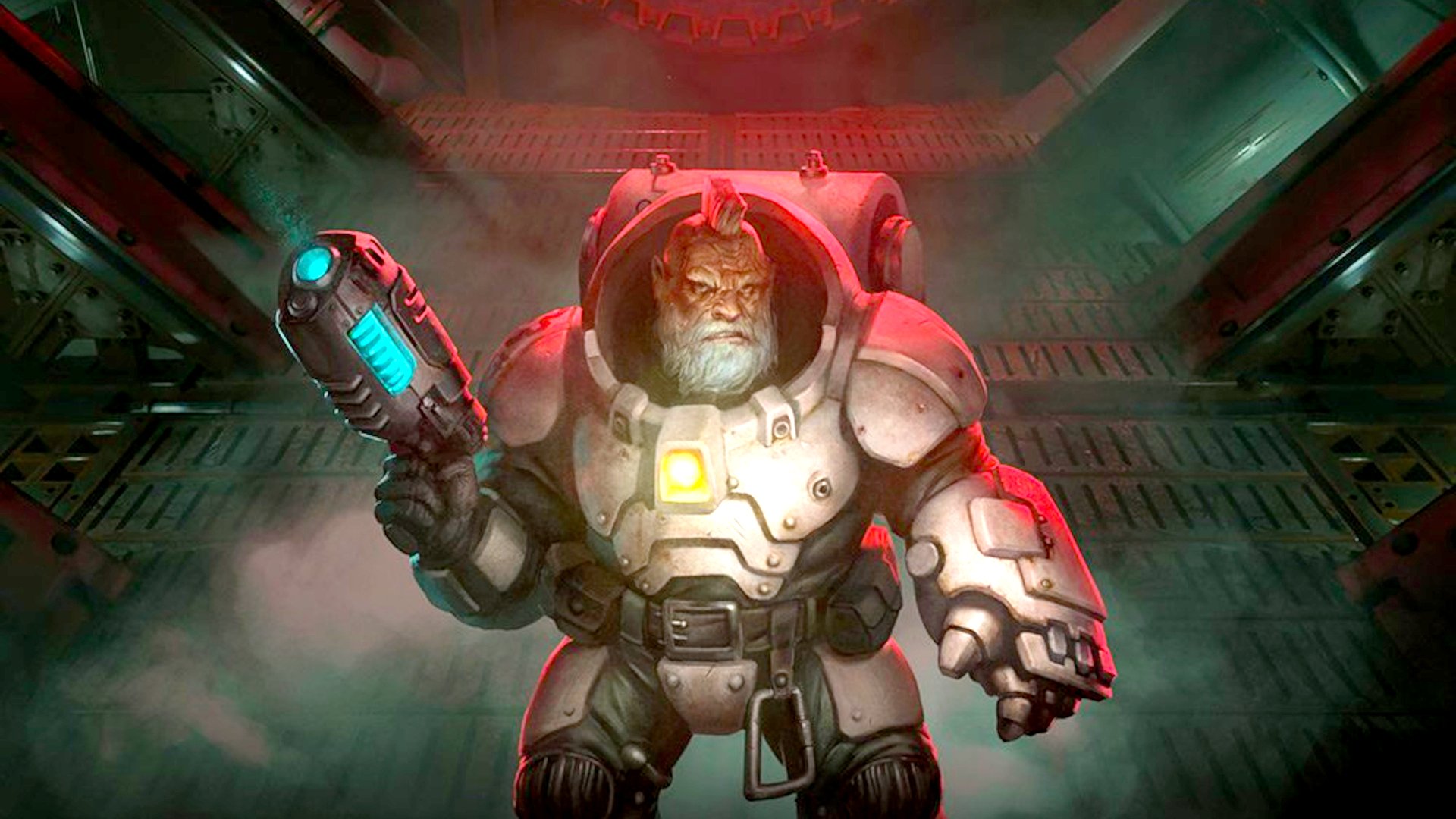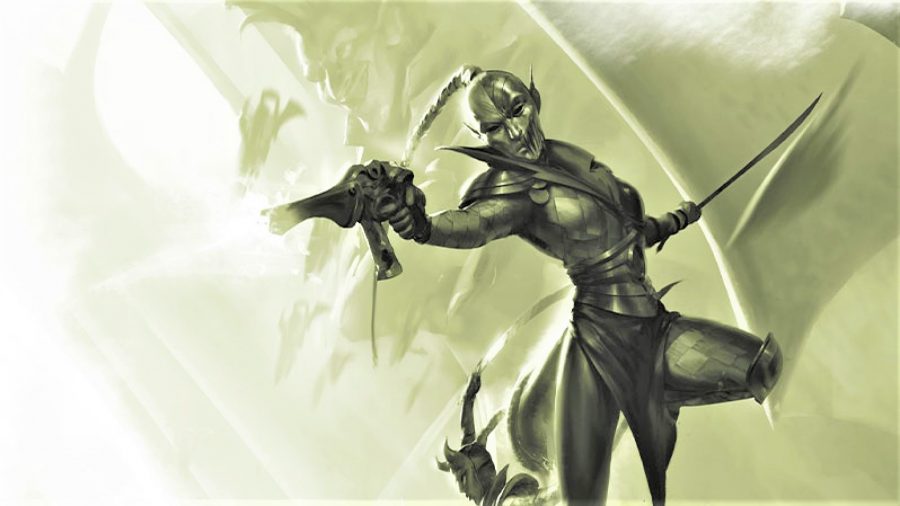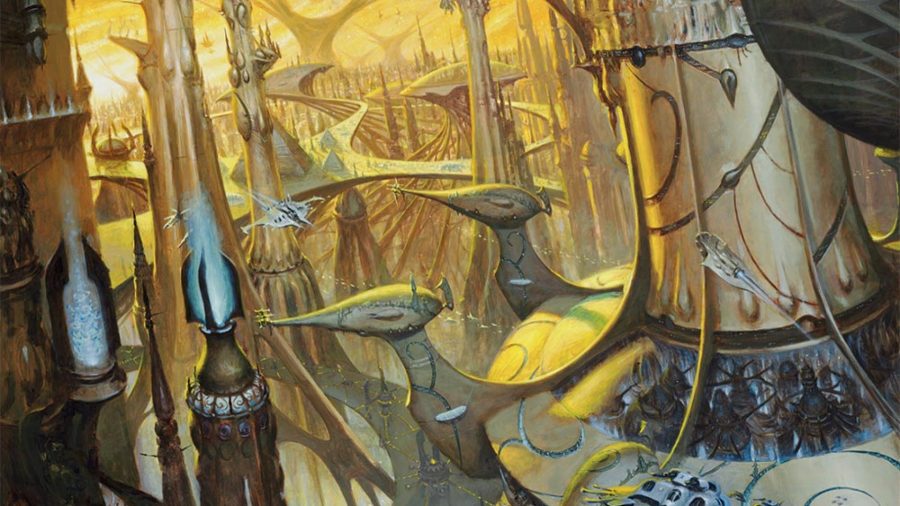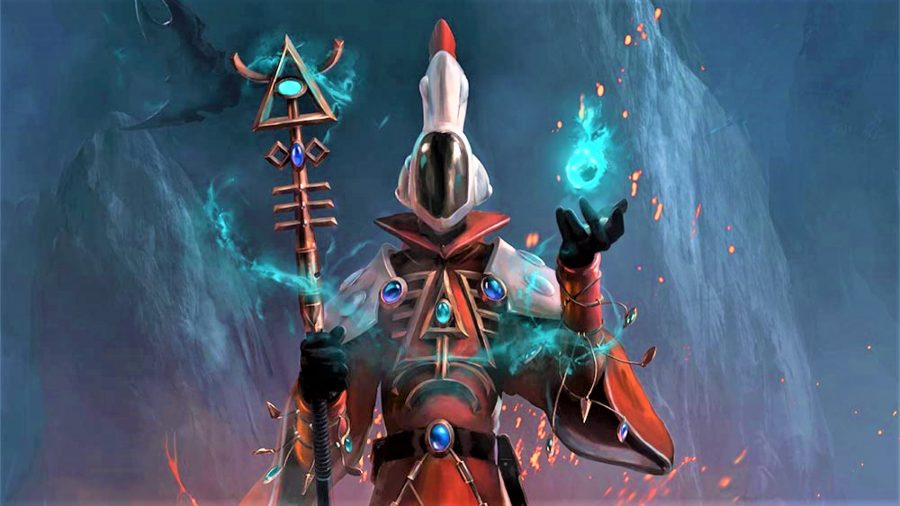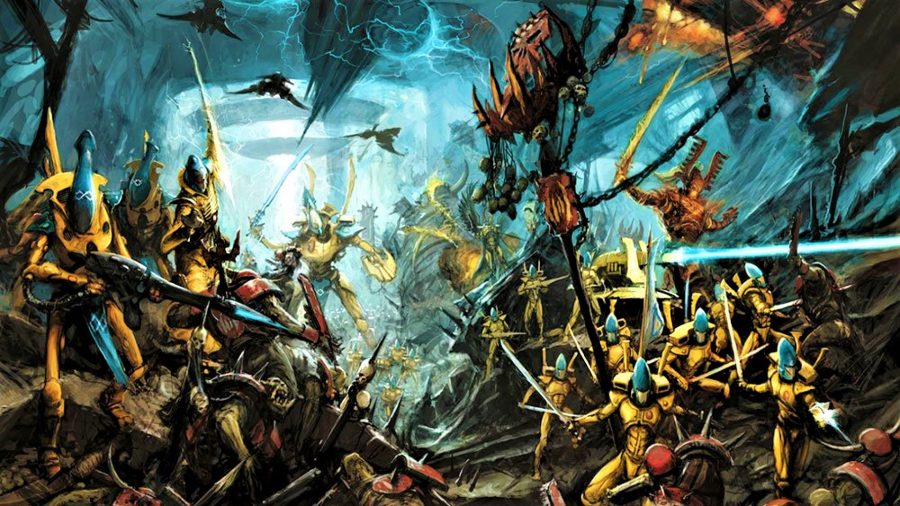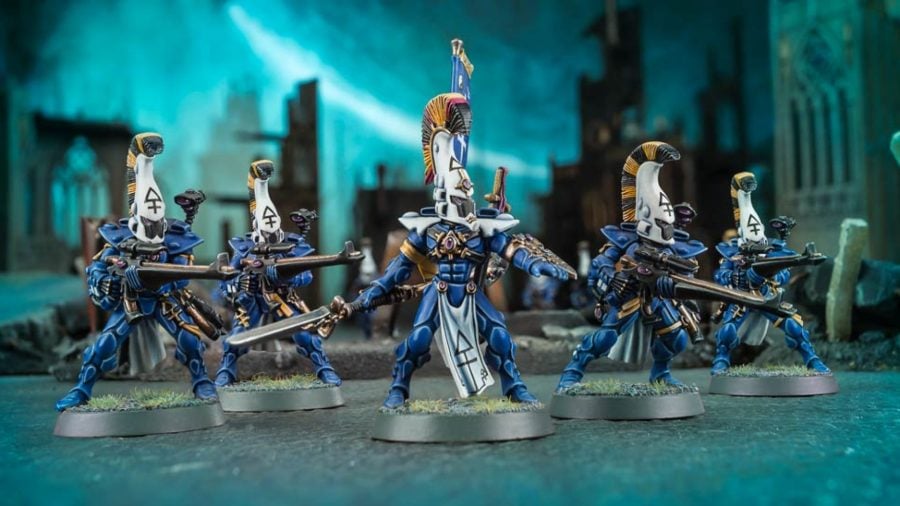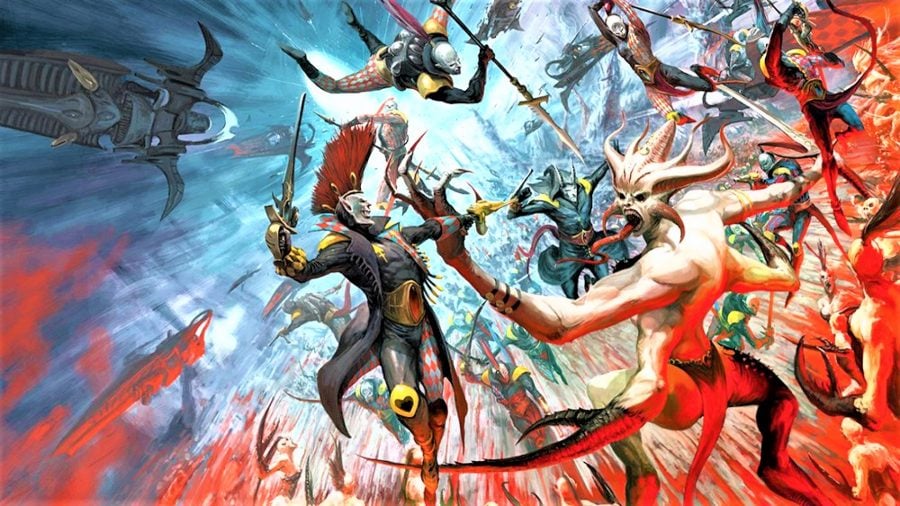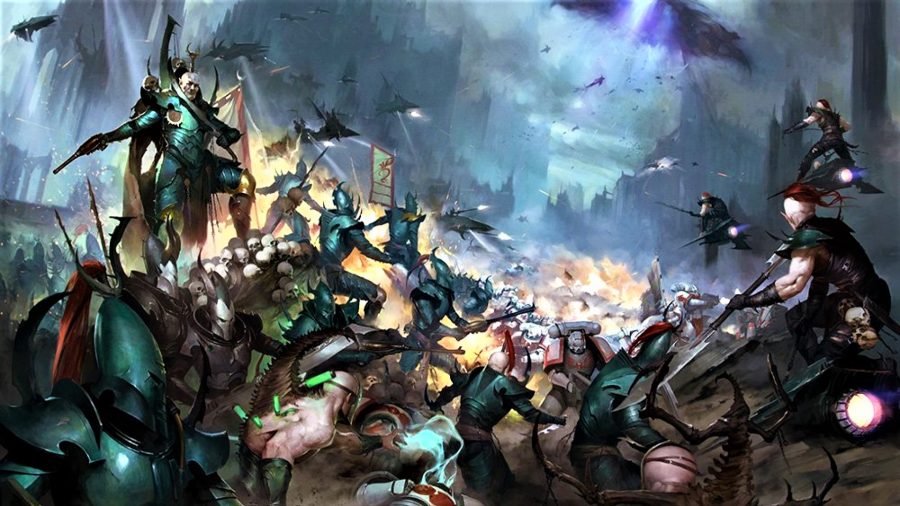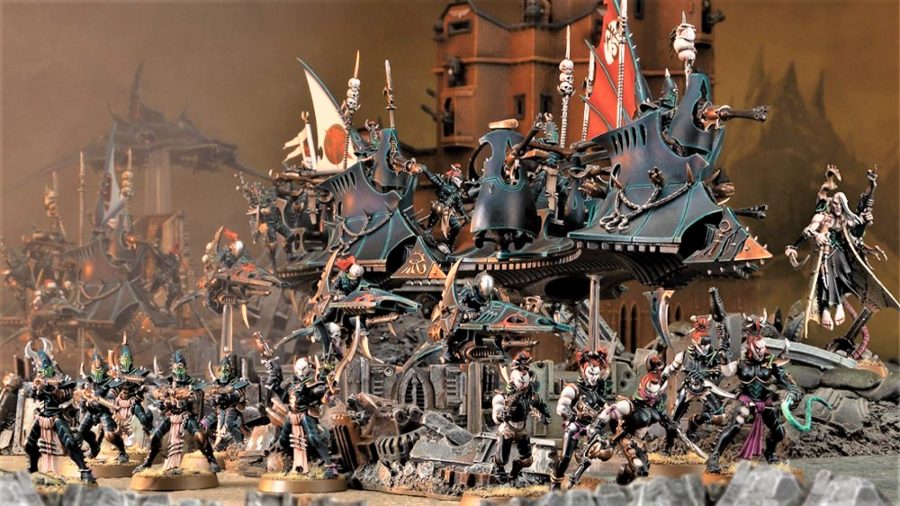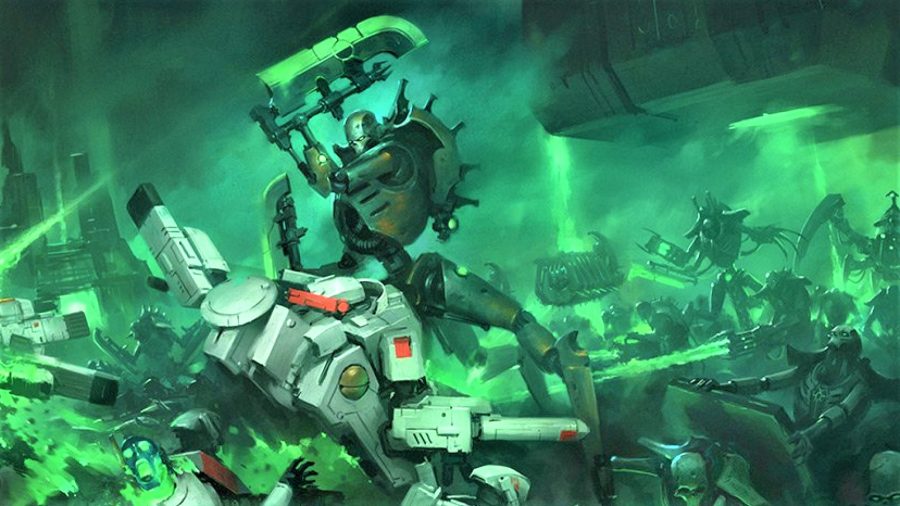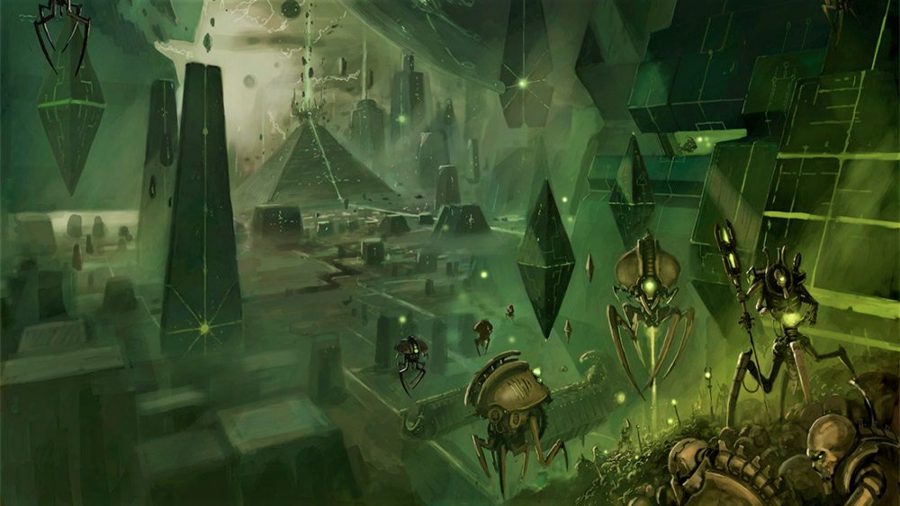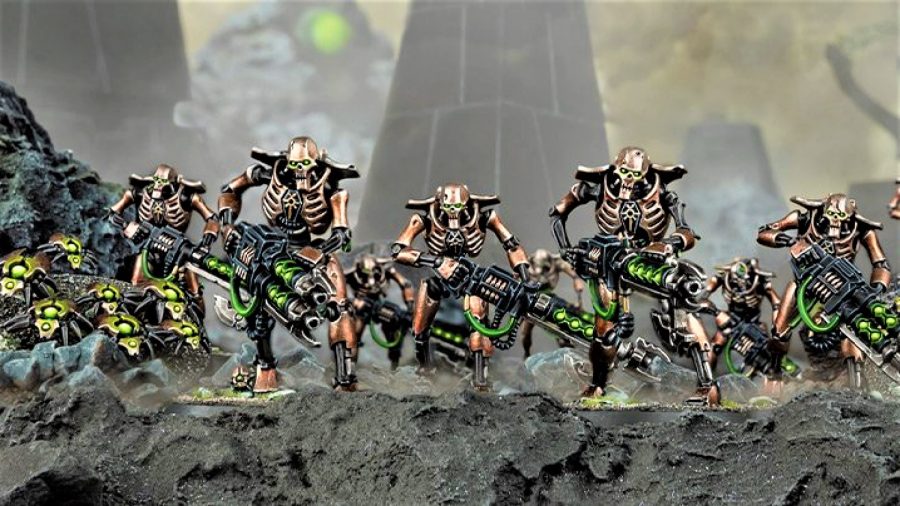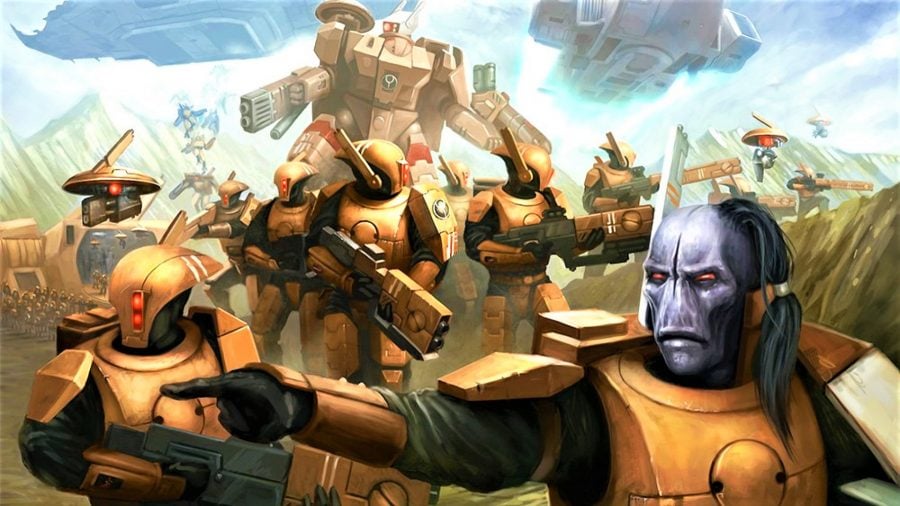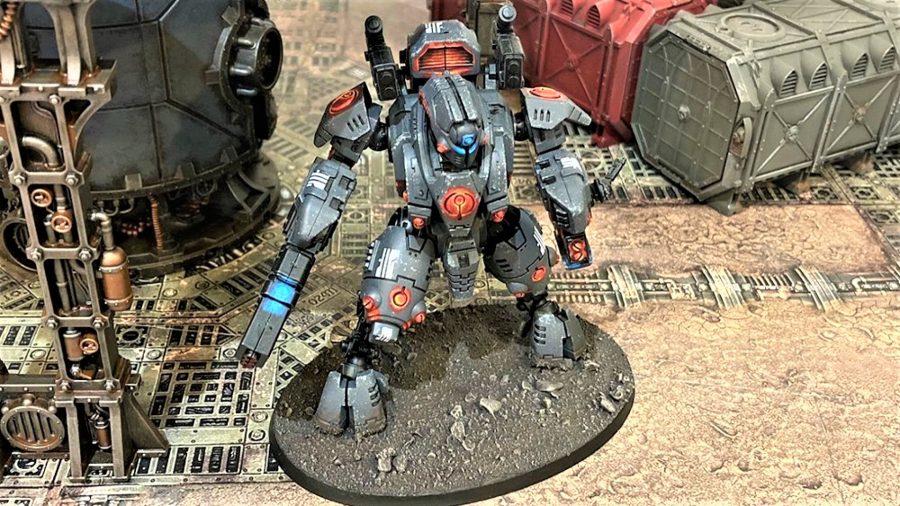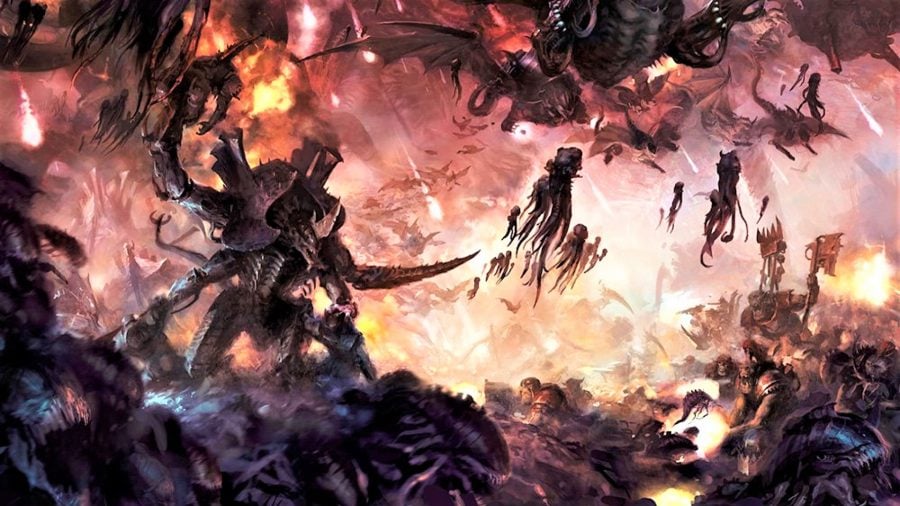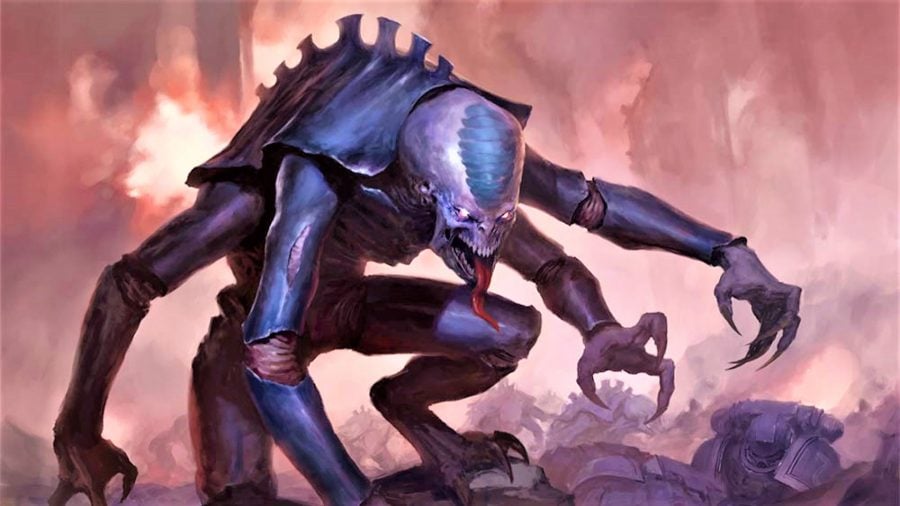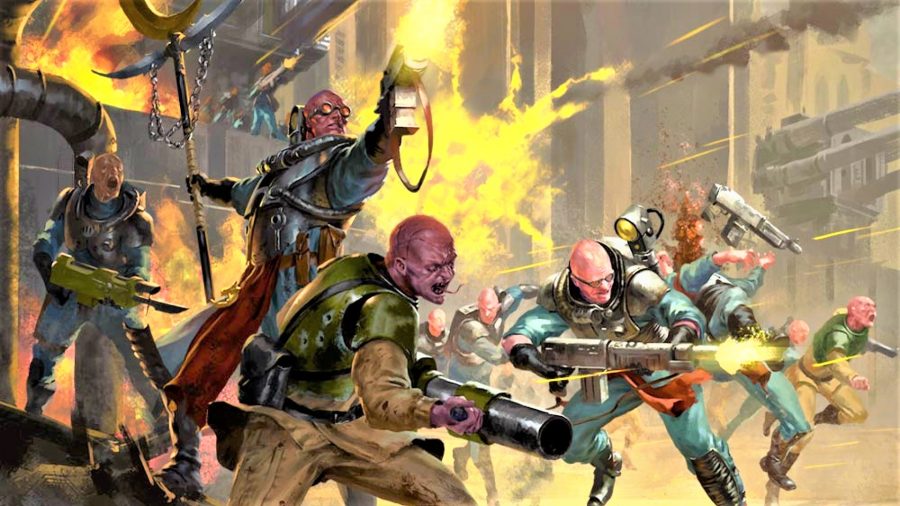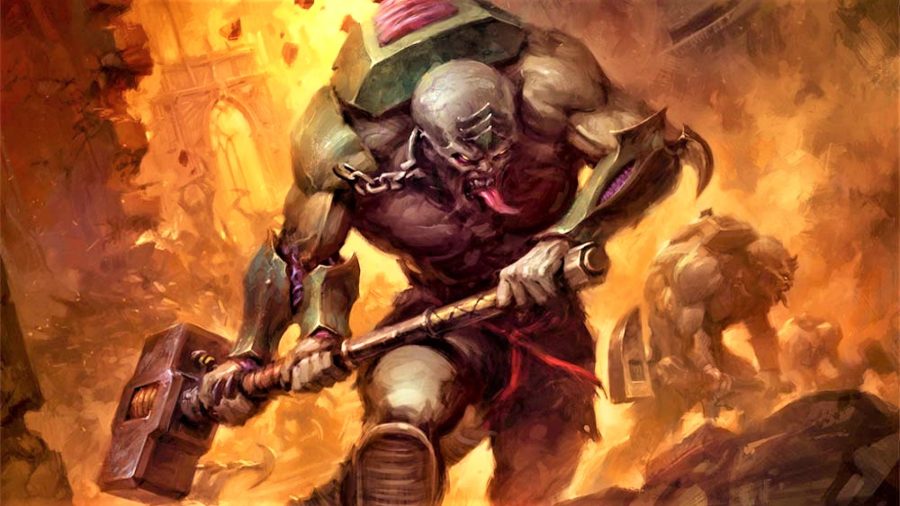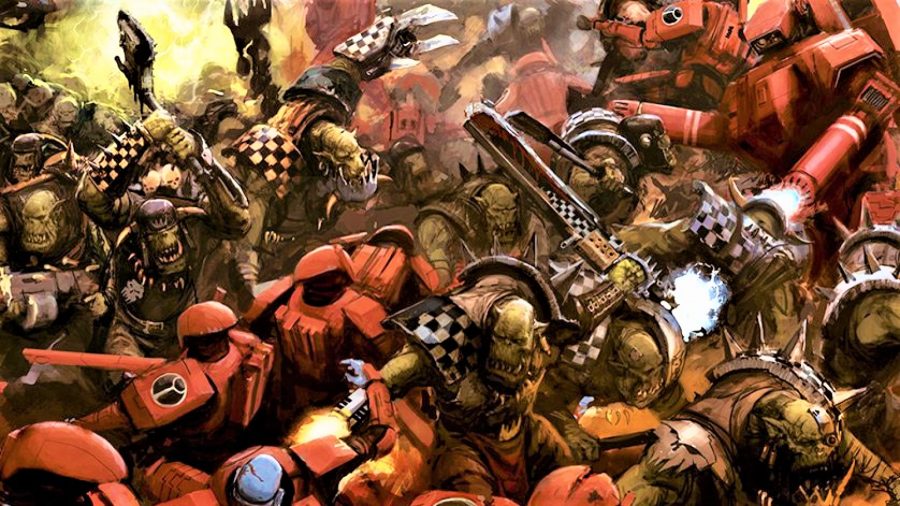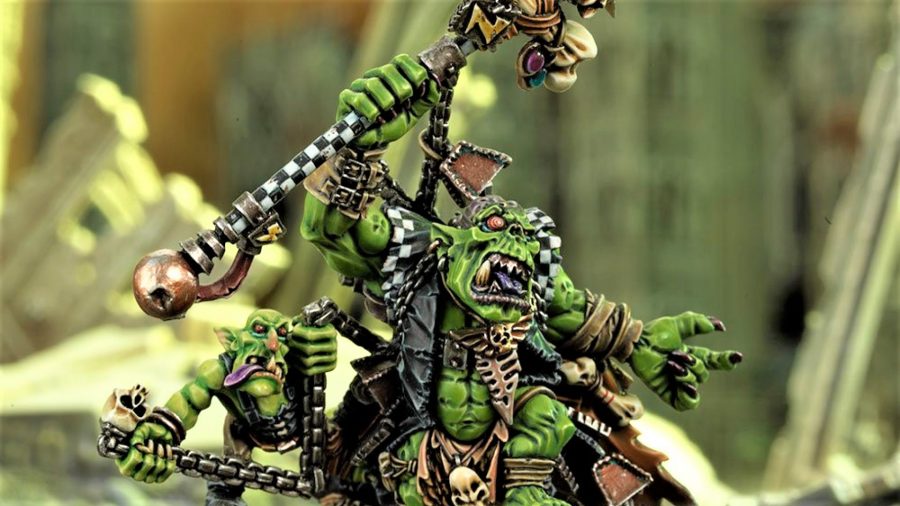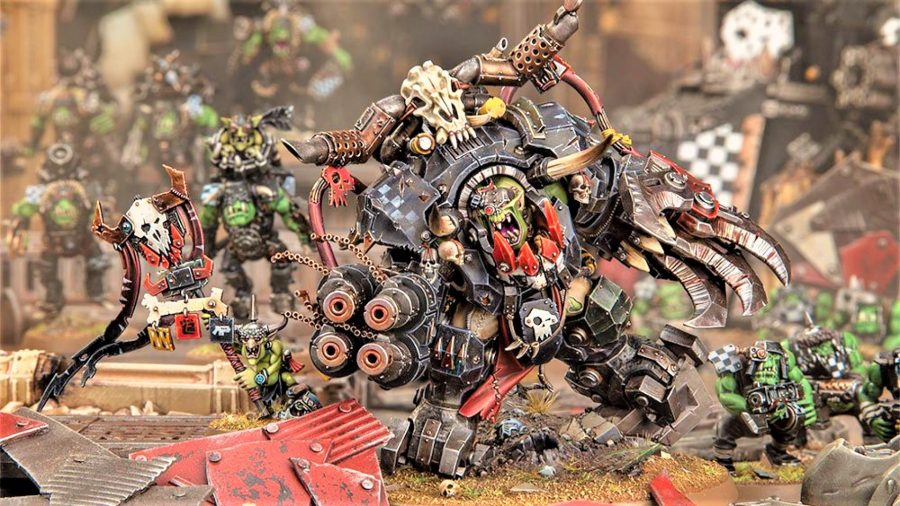Warhammer 40k Xenos is a blanket term used by humans for any life form that isn’t either human, or a daemonic entity of the Warp (the setting’s omnipresent, hellish parallel dimension) – but, in normal terms, the 40k Xenos races are its aliens.
There are eight main Warhammer 40k Xenos races, each with its own lore background, codex rulebook, and range of models – some highly detailed, recently released sculpts; others dating back to various earlier epochs in the development of 40k miniatures. This guide includes everything you need to know about these diverse alien species, their backstories, and how they play on the tabletop.
If you’d rather get a top-level overview of all the armies fighting in the 40k universe, check out our full Warhammer 40k factions guide – or zoom in on the other two-thirds of the setting in our guides to the Warhammer 40k Imperium and Warhammer 40k Chaos forces.
To delve into 40k’s alien armies, however – read on.
These are the current Warhammer 40k xenos factions:
Are we the baddies?
First, a lore refresher.
In the grim darkness of the late 41st millennium, pretty much everyone is a baddie – especially humanity itself. In the 39,000 years between our time and Games Workshop’s bleak far-future setting, humanity hones its innate talent for tyranny, bigotry, cruelty, and xenophobia into a fine art – and humans in 40k despise Xenos above almost anything else.
After the Emperor of Mankind officially ended racism and conflict between human peoples (by violently subjugating them all in the early 30th millennium), he weaponised all humanity’s fear and hatred, and redirected it out into the stars, targeting any cosmic foreigners with the audacity to defy humanity’s ’manifest destiny’ to rule the stars.
So began the human race’s eternal crusade to rid the galaxy of Xenos life forms that refused to submit to its colonial domination (if this is starting to sound like an unsubtle metaphor for 20th century fascism, it’s because that is precisely what it is).
However, that crusade was a colossal failure. After millennia of endless fighting, the galaxy of the 41st millennium is still absolutely chock full of aliens, most of them extremely dangerous, and understandably hacked off with the upstart tribe of bigoted backwater ape-men that keeps trying to exterminate them.
Most Xenos races far predate humanity’s evolutionary history, and – much akin to earth’s undiscovered species – there are reportedly thousands of smaller alien species in 40k’s galaxy that haven’t merited more than a passing comment in a Warhammer 40k book, much less any Games Workshop or Forge World miniatures of their own.
Even among the main Xenos armies, model choices tend to be more limited, and updates less frequent, than they are for the Imperium and Chaos factions (although GW’s recent massive overhaul of the Necrons range could signal changes to come here).
Still, 40k’s Xenos factions are hardly bit-players – they have their own motives and designs upon the galaxy, and each has a rich history and mythology of its own, with culture, philosophies and ways of war reflected in its rules and models on the tabletop.
LEAGUES OF VOTANN
The space dwarfs. There’s lots more to learn about Warhammer 40k’s newest faction, but those three words give you the full flavour.
The Leagues of Votann are a reimagined (and altogether much less silly and light-hearted) version of the old ‘Squats‘ – belligerent, bearded, motor-trike-riding dwarfs who came to Warhammer 40k’s grimdark sci-fi battles aboard armoured battle trains and zeppelins.
Launched in September 2022, the Leagues of Votann faction shares much of the Squats’ original lore, ditches some of it, and expands on it in some interesting ways. Firstly – however humanoid these rebooted Squats may look – the Leagues are firmly in the ‘Xenos’ category. Neither the Imperium, nor the Leagues, nor GW itself, considers them human, and they’ve certainly no love for the Emperor of Man – so: Xenos it is.
The Leagues (who call themselves simply ‘Kin’) did originally come from Terra, but they left millennia ago and have become a clone race of stout, remarkably resilient humanoids, who’ve eked out a broad territory in the ultra-dangerous galactic core, thus largely avoiding unwanted attention (and, er, war) from the other races contesting the galaxy.
How’d they manage it? The same way the Leagues of Votann came by tabletop rules that already have the Warhammer 40k fanbase in full “OMG so overpowered” crisis mode: these fellas have some of the galaxy’s most advanced technology – and that translates into incredibly effective weapons and armour for their (considerable) military forces.
Cautious, self-interested, and highly pragmatic as the Leagues of Votann are, they’re not taking those armies on any wild crusades. But if they know there’s some juicy ore on a planet, they won’t let a piffling matter of a few billion Orks on its surface stand in the way of the mining guilds’ profits. These space dwarfs are very dangerous over short distances – and they know it.
To learn everything you need to know to raise your own deadly Oathband of Kin warriors, check out our full Warhammer 40k Leagues of Votann guide.
Eldar
The lithe, pointy-eared, psychic space elves usually known as Eldar – and recently rebranded as the more copyright-friendly Aeldari – are one of the longest-standing, most prominent players in Warhammer 40K’s cast of hostile aliens.
Among the oldest Xenos races, the Aeldari were already ruling most of our galaxy loaeldaring before the first proto-human even crawled out of Terra’s primordial soup.
The Aeldari’s prolific story goes right back to their origins in the galaxy’s prehistory, in the apocalyptic cosmic conflict known as the War in Heaven – and to properly understand their nomadic, disparate survivor factions in the 41st millennium, you really must learn about their tragic Fall. But such grand tales really do deserve a guide all of their own.
Suffice it to say that, by the time of 9th Edition 40k, the Aeldari are the fractured remnants of a formerly glorious empire, each splinter faction – in its own way – desperately trying to stop their souls being eaten by the Chaos god Slaanesh, whose traumatic birth cursed the entire Aeldari race.
That summary alone should explain why the Aeldari – with notable exceptions – are not a cheery bunch.
There are (technically) three functionally independent Aeldari armies you can collect and play on the tabletop, with their own distinct army rules and playstyles laid out in the 9th edition Aeldari codex: Craftworlds, Harlequins, and Ynnari.
Some of their model ranges and unit choices are shared, however, so collecting miniatures for one Aeldari army can often give you a solid head start on forming another. We’ll have a look at each of them in turn, starting with:
Craftworlds
The mysterious, but (comparatively) calm-seeming space elves. These folks fled from the cataclysm that doomed the Aeldari in colossal, planet-sized biomechanical spaceships called Craftworlds, and have sailed the galaxy’s backroads since, following their own fateful, inscrutable quests.
Their souls, otherwise doomed to eternity in Slaanesh’s belly, are either entombed, in death, within glimmering Spirit Stones (which are jealously guarded beyond all other Aeldari treasures) or become one with the complex Infinity Circuits – the giant soul hard drives at the centre of each Craftworld.
Craftworlds armies tend to be made up of a mixture of Guardians – a citizen militia, normally called to battle only in dire need – and Aspect Warriors: Aeldari who have dedicated themselves to a specific path of spiritual and martial training, using this psychic focus to steel themselves against the chaotic temptations which doomed the ancient Aeldari. These warriors include, among others, the skull-faced, missile-launching Dark Reapers and the noble, plume-helmed riflemen of the Dire Avenger shrine.
Such highly specialised infantry units are borne into the fray by hovering grav-tanks, supported by lightning-fast jetbike assaults and covering fire from high-tech energy weapons. In especially dire straits, Craftworlds armies may be joined by wraith constructs: mighty biomechanical war machines piloted by the immortal soul of an Aeldari contained in a Spirit Stone.
Craftworld Aeldari, very recognisable due to their long history in the game’s world, are a perennial favourite army for beginners, especially as their army lists are quite flexible, making it easy for new starters to assemble a working, balanced army from units with clear, defined roles.
They might be little out of fashion at the moment, since so many of their key models last got a redesign in the 1990s, but Craftworlds armies are flexible, flavourful and old-school cool. Don’t sleep on them. They’ll be back; count on it.
If your fate is set, and you’re drawn to crafting an Eldar warhost of your own, take a deeper dive with our full Warhammer 40k Craftworlds Eldar guide.
Harlequins
The weird-looking space elves dressed as clowns, who look like they might have been added in as a joke (but weren’t). Harlequins are the cultural historians of the Aeldari race, preserving ancient history and mythology in the form of music, plays, comedy and interpretative dance. They’re also transcendentally deadly warriors who wield some of the Eldar’s most destructive weaponry, alongside an impressive level of psychic mastery.
On the tabletop, they’re a super-elite army that’s limited to few models, and entirely reliant on their powerful – but situational – abilities, auras and psychic spells. These have to keep the enemy under control long enough for the Harlequins’ squishy troops and elite units to get in position, and pummel the foe with a truly staggering potential damage output.
Their incredible model sculpts, striking poses, and dazzling, patterned colour schemes place Harlequins top of the list for hobbyists looking for a real painting challenge, and a beauteous army to display to all and sundry. Liable to take real punishment from every mistake, they take some real skill to pilot to victory, though – and so are not ideal for newcomers to the game.
Ynnari
The new, hybrid faction of space elves, who are generally thought of as goodies, despite being united by a shared desire to resurrect a god of death. Ynnari are the newest Xenos faction, and in many ways haven’t really come together yet as a proper army, either in the lore or in the tabletop game. Essentially, they’re a kind of cult insurgency, attracting recruits from Craftworlds, Drukhari and Harlequins alike, and united by the single ambition of bringing Ynnead, the Aeldari god of death, back into being, to protect Aeldari souls from Slaanesh. Will it work? Who knows – but their leaders sure do have some sweet-looking models, great for honing your miniature painting skills.
On the tabletop, their gimmick is gaining special effects and bonuses in the vicinity of things getting killed (whether their own troops, or the enemy’s). Ynnari armies can also include detachments of troops from all the other Aeldari factions, so they’re a very flexible choice, capable of incorporating wildly different playstyles (and very conducive to having your models do double duty; one day those Wyches could be Drukhari slavers, the next Ynnari idealists).
They haven’t yet reached the stage of having their own, neatly-laid out Codex, but this could yet change, with 9th edition ringing in the changes for all factions. Watch this space. Meanwhile, probably start collecting one of the other Aeldari forces, and keep the Ynnari in mind for later.
Drukhari
The horrible-looking space elves with poisoned fingernails, wearing corsets made of knives. The Drukhari (previously known as Dark Eldar) are descendants of the corrupt, depraved Aeldari who brought about the species’ cataclysmic Fall. Escaping the empire’s collapse, they fled into the darkest corners of the Webway to build a spiky and sadistic forever home where nobody could find them.
Ever since, they have survived by launching fast and furious raids upon targets of opportunity all over the galaxy, grabbing as many unfortunate mortals as possible and carting them back to their dark city of Commorragh to be tortured to death (or worse). You see, their psychic addiction to extremes of pain and sensation is the Drukhari’s only means of avoiding consumption by She Who Thirsts – if they run out of victims, they perish, and, you guessed it, end up in Slaanesh’s purple tummy for all eternity. And so they remain forever evil space pirates in impractical BDSM gear, and proud.
Drukhari armies on the tabletop are all about speed, manoeuvrability and brutal melee damage – but light on armour, resilience and ranged firepower. These waifish torturers hit like a truck in close combat, but go down easy under sustained gunfire. They ride into battle on spined skimmers (which bear a striking resemblance to Jabba’s barge from Return of the Jedi) and nippy jetbikes, but these, too, are lightly armoured. Shoot them to death before they get near you.
They also field misshapen experimental horrors crafted by the insane Haemonculi – terrifying flesh constructs so revolting to discuss that we’ll save the details for a later, more focused guide. Just trust us, the Drukhari are an unpleasant lot – if you reckon they might be the perfect army for you, check out our in-depth Warhammer 40k Drukhari guide.
Necrons
OK, enough about the space elves – time to walk like an Egyptian. These are the metal cyber-mummies with glowing green bits sticking out. They’re the Imperium’s main antagonist in the current incarnation of 40K, so you can’t miss ‘em, because they’re on all the boxes.
The Necrons are the oldest known Xenos race, dating back to before that mysterious War in Heaven we mentioned. Once a large, aristocratic, quasi-feudal empire plagued by the evolutionary straitjacket of a tiny lifespan, the Necrons lived through a tragic series of events that granted its entire civilisation immortality – but imprisoned them in soulless metal bodies.
In despair at the fate they’d wrought themselves, the Necron royalty placed their entire race into stasis in vast underground crypts, awaiting a future time when the galaxy would be ripe for conquest and they could regain their former, necropolitan glory.
And rejoice: that time is now! Across the galaxy, the numberless metallic hosts of the Necron dynasties are awakening from their long nap, the command protocols of their noble lords gradually booting them up into full-on galaxy-reclaiming mode. On settled worlds everywhere, pyramidic monoliths are rising from the earth, and legions of mind-slaved Necron Warriors emerging to take back what once was theirs.
On the tabletop, Necrons are deliciously thematic to play – their Reanimation Protocols rule allows dead Necrons to reassemble themselves to avenge their own deaths; Living Metal sees their stronger units constantly regain lost wounds as their damage is repaired in real time by nano-scarabs (yep, you read that right); and, in general, the Necron legions march slowly forward in lock-step, firing their neon green gauss weapons non-stop, until nothing in their path is left alive.
Of course, they have weaknesses: their all-important, objective-capturing troops units move incredibly slowly, and almost all their guns (while potent) have very short ranges. A Necron force must do all it can to close to range before its key damage dealers have been wiped out – but, with some of 40K’s most survivable units, this is eminently doable.
And on top of that, with a brand new shiny codex and model range, including the magnificent Szarekh, the Silent King, the Necrons have never been a more tempting army to collect. You’ll need a lot of silver Warhammer paints, mind.
For a deeper indoctrination into the Necrons’ terrifying dynastic traditions, check out our full Necrons 40k army guide.
T’au Empire
The slightly-built, fish-faced, blue-skinned fellows with mech-warriors shamelessly ripped from Gundam Wing. The T’au Empire (apostrophe only added in 8th edition) are the galaxy’s youngest known Xenos faction, becoming a spacefaring civilisation long after humanity. Though their society is a strict caste system, with the ruling Ethereals at the top and everyone else slotted into rigid, inferior social strata by the regime, the T’au Empire has a reputation for being uncommonly merciful towards those it conquers. More so than the bloodthirsty, genocidal humans, anyway.
Though the 9th Edition T’au codex brought the army many more strategic options, in general it remains what’s known as a “gunline” army – meaning all its most powerful units and abilities rely on using high-tech targeting markerlight beams to paint the enemy, then obliterate them with concentrated weapons fire, at a distance. Famously terrible at hand-to-hand fighting, the T’au go to great lengths to keep their squads of Fire Warrior riflemen, samurai-inspired segmented mechanical Battlesuits and bug-winged alien mercenaries out of any serious melee engagements.
Let’s level with each other here: the T’au’s big attraction is their awesome mech-warrior Battlesuits, and the rest is kind of set-dressing – which is totally fine by us.
The assorted Battlesuit variants are some of the coolest models in 40K, bristling with futuristic weapons that it feels really, really good to roll all the dice for and simply watch the targets disappear. Just go easy on the anime sound effects while playing; it can get distracting.
Tyranids
The terrifying insectoid monsters that look like they’re tearing their way out of the box to eat your face. The Tyranids are an unknowable, immeasurable, apparently unstoppable force of biological annihilation, that came from the depths of space beyond our galaxy, with the express intention of consuming every living thing, everywhere.
Tyranid bio-forms adapt and evolve at great speed, in real time, adopting whatever form necessary to evade, encircle, disable and devour their prey – whether they be a cowering, weeping child, an eight-foot power-armoured Space Marine, or 70,000 acres of coniferous woodland. The ‘Nids are, fundamentally, really not fussed. Encroaching upon us inexorably, planet by planet, in organic armadas known as Hive Fleets, the Tyranid menace is slowly but surely winding its way into every galactic neighbourhood, seeding every world with its self-replicating spores and methodically picking them clean of every living cell, until only a barren husk remains.
If that sounds like a project you’d like to hop on board with in your games of Warhammer 40k, well, firstly, you seem pretty scary, and secondly – better get the full picture with our comprehensive guide to Warhammer 40k Tyranids. If you’re really sure about it – then you’d better prepare that wallet of yours.
Tyranids are the quintessential ‘horde’ type army, and, while you could field just a small force of ‘big bugs’ – such as the monstrous Carnifex, Trygon and Exocrine forms – beginner ‘Nids players will likely find more success with a balanced list, including large swarms of fast-moving Hormagaunts, a smattering of Termagant skirmishers, and wrecking-ball broods of many-armed Genestealers.
It’ll cost you in hard currency – and in painting hours – but commanding an enormous host of bioluminescent, gribbly living weapons as it swallows up the entire gaming table is a unique pleasure worth experiencing. Just watch a couple of videos on batch-painting before you get started.
Genestealer Cults
The futuristic mine-worker-looking folks with the unnerving glint in their eyes, which – surprise, surprise – turns out to be them beginning their transformation into one of the above terrifying insectoid monsters. A relatively new 40K army, the Genestealer Cults have rapidly gained a popular following among Warhammerers for their innovative game mechanics and playstyle (hold your horses, we’ll explain in a moment), and their compelling backstory, which touches on some evergreen sci-fi horror tropes.
You see, the Tyranid Genestealers we mentioned above are a specially-engineered vanguard for the main Hive Fleets. Flying ahead of the main force, the Genestealers steal (ho ho) onto the target planet and, in total secrecy, inject their unique genetic material into as many indigenous life forms as possible, thus altering their DNA, such that their future offspring will not be human, but rather human-genestealer hybrids. Such hybrids, bound by unbreakable instinctive programming, spread their genetic curse far and wide, exponentially increasing their numbers and eventually organising into underground cells in every major population centre.
Given enough time, the Cults’ gene-programmed followers use guerilla warfare to destabilise governments, collapse economies, foment civil strife and create general havoc, so that when the real Tyranids arrive, any real defence is impossible. Then the feasting begins.
On the tabletop, Genestealer Cults play differently from any other army. On the surface, they seem pretty rubbish – most of their troops are weak and lightly armoured, they’re not great at shooting, their heavy weapons are limited and, while they have some very killy melee units, these can be costly, meaning you won’t be able to field too many. But the magic comes in their unique ambush ability, allowing the Cults to deploy most of their units onto the board in secret, as generic ‘ambush markers’, without telling your opponent what they are.
More than any army, the Cults give you ways to keep your enemies guessing throughout the game, with no clue where your deadliest units are until it’s too late, you’ve sprung the trap and their unsuspecting advance guard is mincemeat. A challenging army to learn, for sure, but what Genestealer Cults lack in simplicity, they pay back in the satisfaction of the perfect ambush.
Itching to raise your own underground revolution of deceived part-human gribblies? Check out our full guide to Warhammer 40k Genestealer Cults for a more complete run-down.
Orks
The ones that take the least explaining (but, by jingo, we’ll do it anyway). Orks are big, mean, green killin’ machines, whose approach to warfare is an exercise in sublime simplicity: they get together as many Orks as possible, pick up the sharpest objects they can find, and run screaming at the enemy. Whether they ‘win’ or ‘lose’ doesn’t usually factor much in the thinking; the important thing is they had a damn good scrap.
Counter-intuitively, the Orks are actually an ancient race with quite arcane origins, dating back – just like the Aeldari and Necrons – to the War in Heaven, when the first proto-Orks were bred to be the ultimate warrior race. But, unlike those two bitter old empires, the Orks’ history matters not a jot, either to their role in the 41st millennium, or to the green fellas themselves.
Orks neither know nor care where they come from; the closest thing they have to valuing something outside the present moment is their vague, freeform religion, worshipping the twin Ork gods, Gork (who is brutal but kunnin’) and Mork (who is kunnin’ but brutal).
They have an inborn and unpredictable connection to the warp, manifesting in volatile psyker Orks called Weirdboys, and more peculiar effects still, when large numbers of Orks get together.
But even these things are of only secondary importance to finding out if you want to play Orks.
Here’s what’s more important: Orks represent the highest concentration of lighthearted, silly humour in 40K. Their troops are called Boyz, their sergeants are called Nobz, and when lots of them get together in a fighting force, they call it a Waaagh. That’s actually the proper noun: Waaagh (with three ‘a’s).
Their culture of instinctive, boisterous and genuinely recreational ultraviolence stands in stark contrast to the high-minded machinations and politicking of other factions.
The cartoonishness even shines through in their rules mechanics, with effects like ‘ramshackle’ – which allows the greenskins’ cobbled-together scrap-metal vehicles to shrug off even lethal damage with one lucky roll, on the basis that the truck that just got half its wheels blown off “didn’t need dat bit anyway!”
Fact is, Orks iz just plain fun – but if you’re going to collect them, be warned: as a ‘horde’ type army, you’ll need to buy and paint a lot of models. And be prepared to watch your little green friends die in droves every game – even the ones you win!
Still wanna be a warboss? Then dive into our full-blown, comprehensive guide to Warhammer 40k Orks for the complete greenskin run-down.
Source: Wargamer




